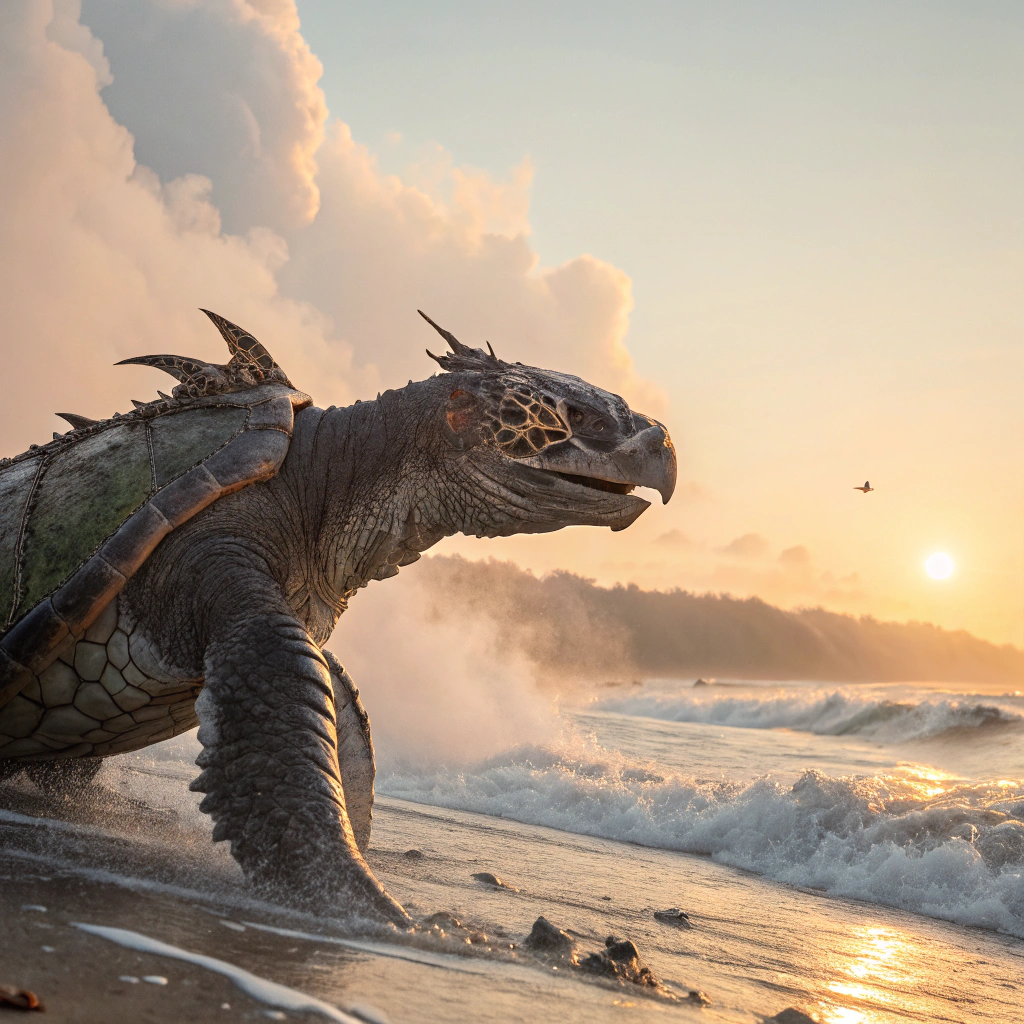
Dragon Turtle Name Generator
Name: Ao Gui
Meaning Origin Description Blue-Green Turtle Chinese Ancient water deity combining dragon and turtle aspectsName: Ryujin
Meaning Origin Description Dragon God Japanese Ruler of the sea who can transform between dragon and turtle formsName: Genbu
Meaning Origin Description Black Warrior Japanese Celestial guardian of the North represented by a turtle-dragon hybridName: Xuan Wu
Meaning Origin Description Dark Warrior Chinese Powerful deity symbolized by an intertwined turtle and snakeName: Torthrax
Meaning Origin Description Storm Shell Greek-Latin Hybrid Thunder-scaled beast of the deep seasDragon Turtle Details
| Habitat | Deep oceans and coastal waters |
| Breath weapon | Steam breath |
| Usual alignment | Neutral |
The Dragon Turtle (Draconus testudinus giganticus) represents one of the most formidable aquatic megafauna specimens in known ecosystems. This massive creature exhibits characteristics of both chelonian and draconic species, with a primary habitat in deep oceanic waters and occasional territorial claims in coastal regions.
Physical Characteristics:
- Length: 30-50 feet
- Weight: 25-35 tons
- Shell composition: Extremely dense keratin plates reinforced with crystalline deposits
- Respiratory system: Dual-functioning, allowing both underwater and surface breathing
- Notable features: Retractable head and limbs, steam-generating glands in throat
Behavioral Patterns: These creatures display territorial dominance over vast oceanic regions, typically claiming shipping lanes and deep-water trenches. They demonstrate high intelligence and strategic thinking, particularly in defending their territory or hunting prey. Dragon Turtles often rest on the ocean floor, using their natural camouflage to blend with the seafloor topography.
Environmental Impact: As apex predators, Dragon Turtles play a crucial role in maintaining marine ecosystem balance. They primarily consume large fish, whales, and occasionally ships that enter their territory. Their feeding habits help control population levels of various marine species.
Social Structure: Predominantly solitary, they only gather for mating purposes every few decades. Females lay eggs in deep underwater caves, providing no parental care after hatching. Young specimens are extremely rare to observe due to their elusive nature and high mortality rate.
Typical Alignment: These creatures generally exhibit neutral to neutral-evil behavioral patterns, prioritizing territorial defense and personal gain over broader ecological concerns. They demonstrate remarkable intelligence in negotiations, often demanding tribute from passing vessels rather than engaging in unnecessary conflict.
Defensive Mechanisms:
- Steam breath capable of reaching temperatures of 200°C
- Nearly impenetrable shell providing excellent defense against both physical and magical attacks
- Powerful jaw structure capable of crushing ship hulls
- Advanced pressure adaptation allowing rapid depth changes
Conservation Status: While exact population numbers remain unknown due to their deep-sea habitat, Dragon Turtles are classified as rare but stable. Their primary threats include habitat disruption from deep-sea mining and conflicts with maritime traffic.